
Cult-CreaTE Partnership Declaration launched
A declaration on “Cultural and Creative Tourism Development based on CCIs for Competitiveness of SMEs” is launched by Cult-CreaTE partnership, at project end.
The potential of Cultural & Creative Industries (CCIs) in developing new Cultural & Creative Tourism (CCT) products and services for Growth & Jobs, is being advanced by the Cult-CreaTE project with policy change in 8 regions.
Common challenges are:
- The contribution of CCIs to CCT has not been given the attention it deserves to date. Cultural tourism needs CCIs to partially reinvent itself and attract the new generations. CCIs are also an indispensable source of innovation for other types of sustainable tourism, typically ‘Creative Tourism’.
- Creative Tourism is considered a new generation of cultural tourism by involving the tourists themselves and the locals in the creation of the tourist products (co-creation).
- CCIs are in a strategic position to promote smart, sustainable and inclusive growth in all EU regions and cities, and thus contribute fully to the Europe 2020 Strategy and beyond, through their deployment for CCT.
- While some EU regions have been very good at tapping into this extraordinary potential as a way to promote socio-economic development, it however, appears that many others have not been making most of this potential.
- Synergies between sustainable tourism and CCIs can enhance the visibility and promotion of CCT. These synergies can contribute to the promotion of sustainable tourism destinations, an attraction of new investment and creation of new employment opportunities, particularly for youth and in lagging regions.
The overall objective is to redeploy CCIs for the development and promotion of CCT strategies, with sustainability, innovations, capitalisation, policy learning, policy implementation and capacity building.
Main outputs are action plans, with implementation and monitoring of improved policy instruments in 8 destination regions, communication and dissemination tools for policy learning and capacity building, contribution to EUpolicies and EU2020 targets. The beneficiaries are public authorities and their stakeholders.
ACTIVITIES
1. Thematic Workshops on cultural and creative industries contribution to cultural and creative tourism, in four specific themes, (one per semester in Phase 1), viz:
A. Identification of CCIs and potential contribution to CCT development (Veneto Region, IT),
B. Best practices of CCT based on CCIs (Dundee, UK),
C. CCT product development based on CCIs (Nicosia, CY),
D. Governance and Business Models (Cork, IE).
2. Study Visits regarding best practices on a deployment of CCIs for sustainable cultural and creative tourism (one per semester in Phase 1, in conjuction with each Workshop A, B, C, D above).
3. Peer reviews on creative tourism products development and policy instruments enhancement process, whereby partners will cooperate to improve policy instruments and action plans in specific topics according to partner needs and expertise.
4. Exploitation and application of available relevant research results for mainstreaming into Operational Programmes and ESIF.
5. Stakeholder engagement throughout.
6. Policy learning with the policy change at the local/regional level.
7. Relevant inputs to Policy Learning Platform of Interreg Europe programme.
8. Capacity building for partners’ staff, policy makers and key stakeholders, regarding creative tourism product development, based on CCIs.
9. Dissemination to pan-European fora, EU institutions, international organisations (UNESCO/UNWTO) and other destination authorities and MAs.
The combination and interrelation between activities of exchange of experience is according to the above sequence.
Partners with external expertise will mentor the results undertaken by exchange of experience to other partners which will help to develop, monitor and implement Action Plans.
The expected results are the inclusion of the findings in the selected policy instruments and Action Plans for CCIs contribution to CCT.
All stakeholder groups will be involved in the policy learning process (exchange of experience) which will ensure better understanding on the issue of the project and need of policy change, as well as engagement in the monitoring and implementation of Action Plans in Phase 2.
€1,554,319.00
SME competitiveness
ISSUE ADDRESSED
Cultural and Creative Industries (CCIs) refer to cultural heritage, design, crafts, digital products, performing and visual arts, film, video, music, TV and radio, festivals, advertising, architecture, fashion, archives and libraries, audio-visual, multimedia, publishing, museums and galleries, R&D, software, toys and games, video games and high-end products (which rely on a strong cultural and creative input such as design and manufacturing of fashion materials and goods and their distribution, in particular high-end fashion, jewellery and watches, accessories, leather goods, perfumes and cosmetics, furniture and household appliances, cars, boats, as well as gastronomy, hotels and leisure).
The EC Communication ‘Promoting cultural and creative sectors for growth and jobs in the EU’ (COM(2012) 537 final) acknowledged that “Culture and creativity have also direct impacts on sectors such as tourism” and invited Member States, involving all relevant public and private stakeholders, to: “Reinforce cooperation across CCS and with other sectors such as ICT, tourism etc".
Although a lot of attention has been given to CCIs in various EU initiatives (eg INTERREG IVC and Creative Europe programmes), the contribution of CCIs to cultural and creative tourism has not been given the attention it deserves to date. Cultural tourism needs CCIs to partially reinvent itself and attract the new generations. CCIs are also an indispensable source of innovation for other types of sustainable tourism, typically ‘Creative Tourism’.
Creative Tourism is considered a new generation of cultural tourism by involving the tourists themselves and the locals in the creation of the tourist products (co-creation). The Creative Tourism concept is defined as: ‘‘Tourism which offers visitors the opportunity to develop their creative potential through active participation in courses, cultural and learning experiences, which are characteristic of their holiday destination.” CCIs offer many experiences the cultural and creative tourists are eager to live when they travel. This new way of discovering another culture by experiencing it has been growing increasingly during the last decade.
CCIs are in a strategic position to promote smart, sustainable and inclusive growth in all EU regions and cities, and thus contribute fully to the Europe 2020 Strategy and beyond, through their deployment for Cultural and Creative Tourism (CCT).
While some EU regions have been very good at tapping into this extraordinary potential as a way to promote socio-economic development - including through the use of EU Structural Funds -, it, however, appears that many others have not been making most of this potential.
Synergies between sustainable tourism and CCIs can enhance the visibility and promotion of CCT. These synergies can contribute to the promotion of sustainable tourism destinations, an attraction of new investment and creation of new employment opportunities, particularly for youth and in lagging regions.
The present Cult-CreaTE project aims to redeploy CCIs in developing new CCT products & services for Growth & Jobs, with innovations, policy change & capacity building. Interregional cooperation is highly required to achieve this aim, given that various regions and destinations are at different level of development regarding CCT based on CCIs. Thus a large partnership with wide geographical range and partner type is required indeed for the exchange of experience & policy learning process. The interregional cooperation involves 2 SF ROPs (Veneto IT, Kujawsko-Pomorskie PL), 3 city authorities (Cork IE; Dundee, Scotland UK; Naoussa EL) and 3 DMOs (Vidzeme LV, Pecs HU, Nicosia CY), thus including all territorial and institutional types for most effective experience exchange, policy change & capacity building, also facilitated by a pan-European Network based in Brussels (ECTN BE) with 29 members in 19 countries & experienced in interregional cooperation, as advisory partner.
INNOVATIVE CHARACTER
Innovative character lies in the effective contribution of CCIs to CCT development and delivery, by exploiting CCI/CCT synergies, as added value to previous initiatives.
There are also important EU policies and other pan-European initiatives, for added value with innovations, viz:
- The EC Communication ‘Promoting cultural and creative sectors for growth and jobs in the EU’ (COM(2012) 537 final): “Culture and creativity have also direct impacts on sectors such as tourism; Reinforce cooperation across CCS and with other sectors such as ICT, tourism etc., inc. joint initiatives to developing a more open, innovative and entrepreneurial mind-set in the economy”
- Cultural Heritage counts for Europe, Europa Nostra
- European Heritage Alliance 3.3 (EHA) with ECTN as an active member
- Tourism Manifesto for Growth & Jobs, led by ETC, ECTN a signatory
- European Year of Cultural Heritage 2018, ECTN is selected by EC DG EAC as a Stakeholder.
The main objectives of the Strategy are: to promote development of tourism sector by increasing economic indicators, to develop & promote tourism-friendly environment by encouraging residents patriotism & hospitality taking into account preservation & development of nature and cultural heritage, as well as building Vidzeme region as recognisable and popular travel destination between countries of Baltic Sea. It includes 3 main priorities: market research, regional marketing & development of high-quality tourism.
The main reason why the Strategy should be improved is due to a need to incorporate CCIs in Cultural & Creative Tourism development for sustainability, inc:
- Include the full information of the CCIs current situation & set the strategic goals for the region;
- Re-assessment & gathering of the new information on the current regional situation;
- Set the new action directions & tasks for achieving priorities related to the CCIs for CCT;
- In-depth analysis of the current regional situation for the CCTs development, taking into account the changes at regional level;
- Development of new measures & suggestions that need to be adopted at the regional level, taking into account the needs of stakeholders.
The updated and enhanced Strategy will be characterised by exact measures and indicators that need to be improved, following a methodological pattern from in-depth analysis to priority recommendations and follow-up of the results at the regional level with CCIs for CCT.
The Policy instrument addressed focusing on Axis no.3: Enhancing the competitiveness of small & medium-sized enterprises with the following main objectives:
3a) Promoting entrepreneurship, in particular by facilitating the economic exploitation of new ideas and fostering the creation of new firms, also included business incubators
3b) Developing and implementing new business models for SMEs, in particular with regard to internationalisation
3c) Supporting the creation and the extension of advanced capacities for product and service development
3d) Supporting the capacity of SMEs to grow in regional, national and international markets, and to engage in innovation processes.
In particular, the Culture Department has launched the following Calls within the Axis 3:
Action 3.5.1 "Support measures for the creation of new cultural businesses”
Sub-Action A "Start Up Investment Aid"
Sub-Action C "Cultural, Creative and Entertainment Companies - CCIs"
Sub-Action D "Naturalistic Companies".
However, the ROP does not cover explicitly CCIs role specifically for CCT product development. The ROP therefore needs to be improved with policies on deployment of CCIs for CCT actions with capitalisation.
The Cult-CreaTE project will enrich and diversify the tourist offer, through the creation of new tourism products. This result will be got also through a close cooperation among local DMOs and the innovative CCIs companies. These companies will be involved as stakeholders in the project.
Objective:
The Irish Government’s tourism policy entitled ‘People, Place & Policy: Growing Tourism to 2025’ has three main targets. They are to increase revenue from overseas tourists, to increase employment in tourism and to increase overseas visitor numbers.
Reasons to improve:
Cork has several local CCIs groups who have the potential & desire to greatly improve the visitor experience, through the development of new cultural & creative tourism products. Should their energy & enthusiasm be harnessed, financed & supported in order to develop the cultural and creative tourism offering of the city, this would open up a whole new tourism market to the city, improving the visitor experience, leading to increased revenue, employment & visitor numbers.
The untapped potential exists in terms of developing new cultural & tourism products. Actions need to be included which see close & supported collaboration between the public sector, education providers & small private sector CCI representatives & groups working together to improve the visitor experience and to develop the cultural & creative tourism offering of the city. A huge appetite exists among local CCIs to engage with visitors and an expanding audience to showcase the CCI offering & experience. We wish to improve the Government’s tourism policy by including a dedicated action incorporated into future Tourism Action Plans supporting collaboration between Failte Ireland & CCIs to support the development of CCT experiences.
The Programme aims to support regional, decentralised economic development and an increase in employment based on local resources. The programme allocates more than EUR 1 billion to integrated sustainable urban development actions in the framework of a dedicated priority.
Funding priorities:
The Programme will focus on the following priorities:
1) Creating local conditions to boost economic growth and increase employment
2) Enterprise friendly and population preserving urban development
- the development of green urban areas and the development of small-scale environmental protection infrastructure,
- sustainable urban transport development,
- improving the energy efficiency of local government buildings,
- development and expansion of public services,
- development of deprived urban areas,
- strengthening of local communities and cooperation.
Reasons for improvement:
One of the most expanding sectors of the service sector in the world is the creative industry, one of the breakthroughs in the development of Baranya County and Pécs. One aims of the selected policy instrument are to revitalise the county economies.
It is necessary to provide financing to projects of the SME sector and support them to grow and internationalise especially in creative and cultural industry. The related tourism recovery can create new jobs, which will increase the local economy.
This objective is not enough highlighted in the policy instrument, so it should be improved to receive more focus.
The OP “Competiveness and Sustainable Development” sets out Cyprus’s development strategy through which the resources of the ERDF and Cohesion Fund can be used within the context of the “Investment in Development and Employment” for the period 2014-2020. The main characteristics and priorities included in the programme and are relevant to this proposal are:
Priority 1- Special Target 3a2: Improvement of the competitiveness of the tourist product: This is considered indispensable for the recovery of the economy, for tourism is one of the most profitable sectors.
Priority 1 – Special target 3a3: Promotion of establishment and development of new business activity from special groups of the population. This would be attempted in the context of investment activities, of which the OP underlines the advancement of entrepreneurship, especially if the financial use of new ideas and the creation of new businesses were facilitated through business incubators.
Priority 6- Sustainable Urban Development – Special target 3a1: Enhancement of business activity in specific urban areas. Dealing with phenomena of economic recession, abandonment of business activity and desolation of the buildings and infrastructure located in these areas.
The OP should be improved in order to make CCIs a priority in economic growth. CCIs can play a fundamental role in the development of CCT, a type of tourism which can contribute both to the profitability of the sector as well as its sustainability.
The key feature of Dundee City Council’s (DCC) policies/strategies is to boost growth in the local economy & to create opportunities for all citizens participating in the economic, social and cultural life of the city; to attract new visitors and investments.
There are several strategies and policies that the project can support in terms of achieving key aims, identifying new actions and improved governance.
The policy instrument addressed aims to make Dundee one of the best small cities in the UK for cultural short breaks until 2020 aiming to boost the value of tourism to the city from £146 million to £185 million. It identifies 5 key areas: establishing the profile, investing in tourism offer, managing the place for visitors, supporting business by encourage collaboration across & between sectors, inluding CCIs.
Current Strategy focuing on the priorities of the DCC & its organisational partners in the Dundee Partnership. There is a need to make sure that it engage businesses & visitors more effectively. DCC need to ensure that the Strategy remain current & address the latest visitor needs, digital processes etc. There is a need to embed CCIs within the strategy to ensure that DCC making the most of CCIs in terms of the unique opportunities it could offer to visitors.
A key priority for the participation in the project is to will be to provide us with learning, experience and knowledge to drive forward the opportunities that CCIs can deliver for CCT development.
Regional Operational Program for Kujawsko-Pomorskie Voivodeship 2014-2020 (ROP K-PV) consists of 11 priority axes directly related to the regional Strategy of Development 2020 +, which is the fundamental regional policy instrument. ROP K-PV is the financial instrument for the Strategy implementation. 72 % of the structural funds of ROP K-PV come from ERDF, while 28 % from ESF. Among them Priority Axis 4 “Environmentally friendly region”, action 4.4 “Protection and development of cultural resources”, specific objective 4 “Increased potential of the cultural capital in the region” is the most adequate to the Cult-CreaTE project’s assumptions.
Reasons for improvement are due to the fact that the so far submitted projects neglect the possibility of commercial use of the cultural resources, also in the context of CCT based on CCIs. This is the aspect we would like to improve within the policy instrument by preparing a new project related to the neglected aspects mentioned above which should be based on the experience and knowledge gained thanks to interregional cooperation.
Pillar 2: education, culture and tourism.
The city of Naousa according to thematic objective 2.2.3 has a rich cultural identity with a trend to improve and enhance the cultural and creative tourism (CCT). With the improvement of the facilities of cultural and creative industry (CCI) Naousa can become a city break destination. The city branding “Naousa” rely on three pillars: a) Nature, b) arts and crafts and c) relaxing. As a result alternative kind of tourism may be developed increasing the number of visitors and the duration of allowance.
Although a lot of attention has been given on promoting cultural and creative sectors of tourism in Naousa, the contribution of CCIs to CCT has not been given the attention it deserves to date. The specific project is a good chance for the city to improve and enhance the second pillar of city branding (arts and crafts). Till now there is no record in terms of identification of CCI and potential contribution to CCT, best practices on this specific topic, governance and business models and cultural and creative tourism development based on the creative industry heritage. All these themes will be improved in the framework of this project.
Synergies between sustainable tourism & CCIs can enhance the visibility and promotion of CCT. These synergies can contribute to the promotion of sustainable tourism destinations, attraction of new investment and creation of new employment opportunities, particularly for youth and in lagging regions.

A declaration on “Cultural and Creative Tourism Development based on CCIs for Competitiveness of SMEs” is launched by Cult-CreaTE partnership, at project end.
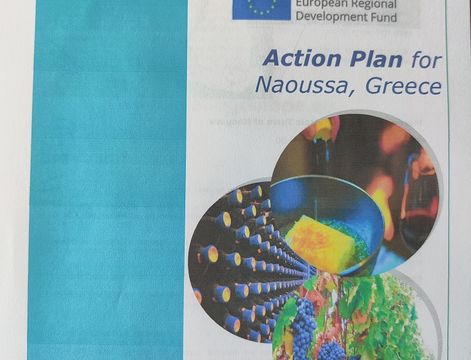
Action Plans on Cultural & Creative Tourism development based on CCIs in 8 partner destinations, for competitiveness of SMEs CCIs through CCT products promotion
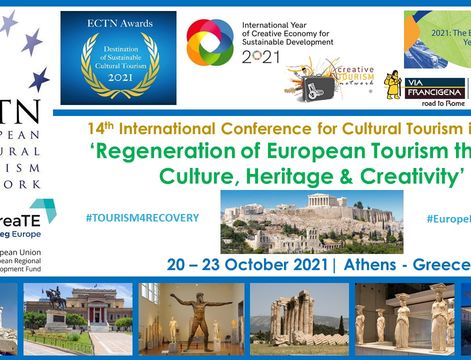
The anual ECTN Conference and Awards in 2021 includes theme "Cultural and Creative Industries (CCIs) contribution to Cultural and Creative Tourism development".
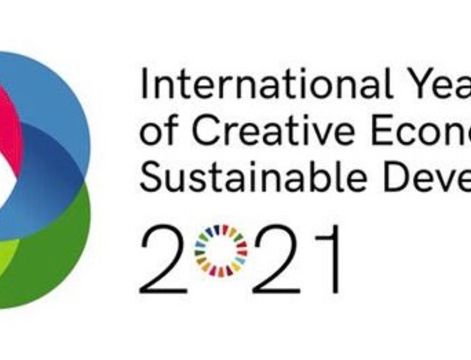
Cult-CreaTE project partnership welcomes the International Year of Creative Economy for Sustainable Development 2021, as declared by the UN General Assembly
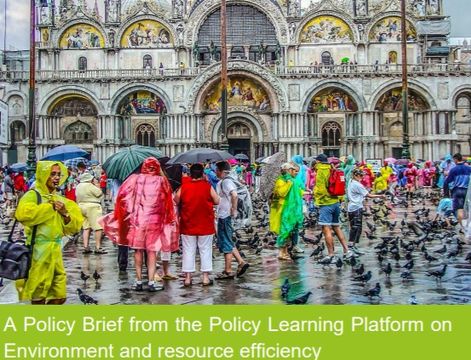
Good Practices of Cult-CreaTe project included in the Policy brief on Sustainable Toursism and Overtourism by PLP
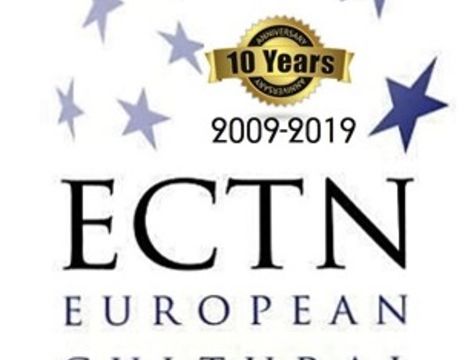
Expert in Governance and Business Modes for CCT based on CCIs, toweards SME Competitiveness, by ECTN advisory partner

Identification, exploitation and application of available relevant research results regarding the contribution of CCIs in CCT, for mainstreaming into OPs & ESIF

Links with several, relevant Sustainable Tourism Goals (SDGs) of the UN, related to Tourism, are established by the Cul-CreaTE project
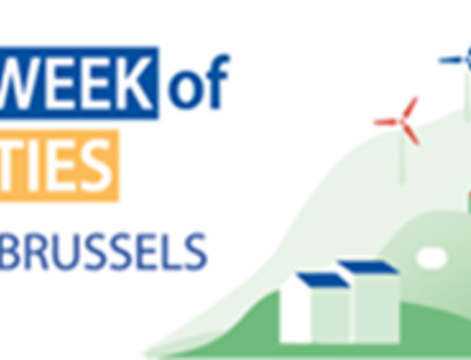
Cult-CreaTE held a Participatory Lab at the European Week of Regions and Cities digital event, on 13 October 2020, organised by advisory partner ECTN (Video)

Call for offers on CCT Product development based on CCIs. Deadline: 28 Augusy 2020 24:00 CEST